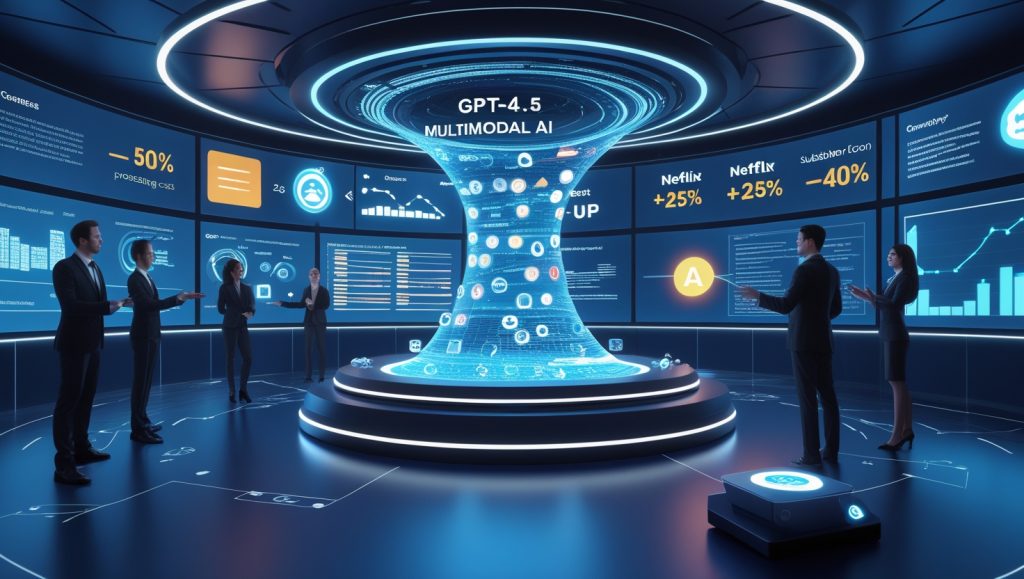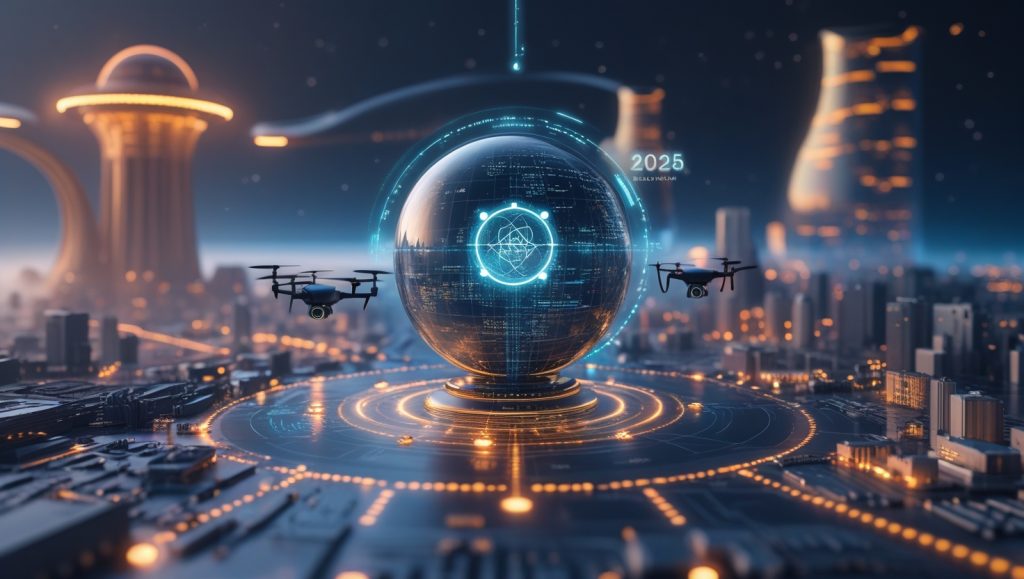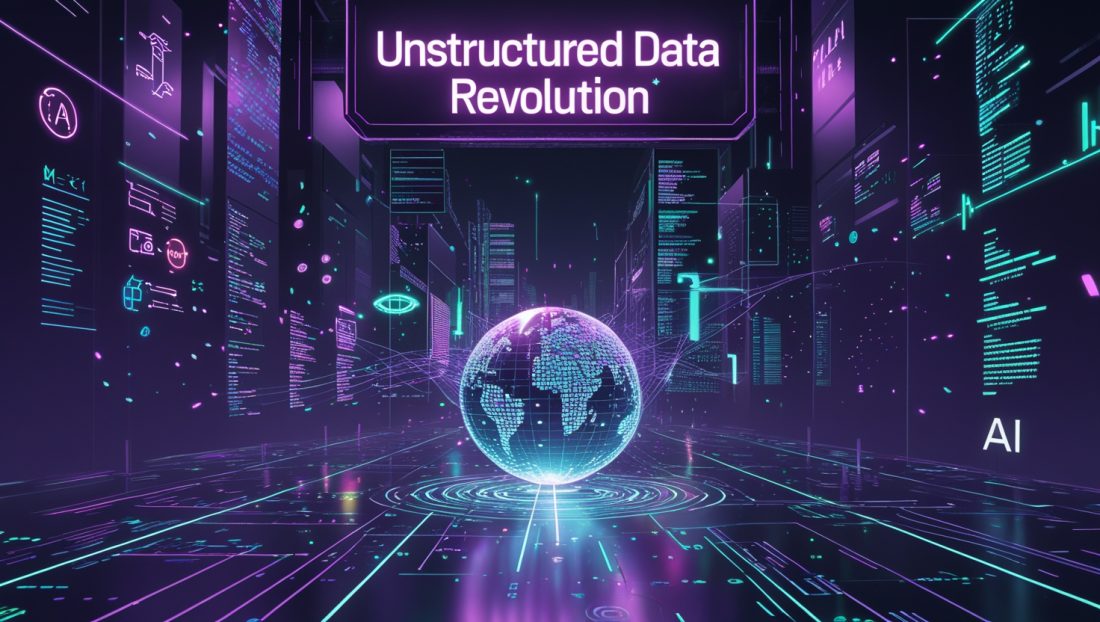Unleashing the Unstructured Data Revolution 2025: AI’s $500B Goldmine Reshaping Global Industries
Did you know that 80% of the data your business generates today is unstructured—and untapped? In 2025, this overlooked resource is unlocking over $500 billion in global value, driven by AI’s ability to decode text, images, and sensor data. Welcome to the Unstructured Data Revolution 2025, where chaos becomes clarity, and insights become action.
What Is Unstructured Data? Defining the Invisible Treasure
Unlike structured data neatly organized in databases, unstructured data is raw, unformatted, and ubiquitous. It includes:
- Text: Emails, social media posts, contracts.
- Multimedia: Videos, images, voice recordings.
- Machine-generated: IoT sensor logs, satellite imagery.
Why does this matter? Unstructured data holds patterns invisible to traditional analytics. For example, Walmart analyzes customer call transcripts to identify recurring complaints, reducing service bottlenecks by 30%. Yet, less than 20% of enterprises currently extract value from it.
The 2025 Tipping Point: Why Now?

AI Maturity Meets Economic Necessity
In 2025, AI models like GPT-4.5 and Google’s Multimodal AI process unstructured data with human-like precision. Pair this with rising economic pressures:
- Labor costs: Automating data analysis saves up to 50% in operational expenses (McKinsey).
- Competitive edge: Early adopters like Netflix use AI-driven sentiment analysis to refine content strategies, boosting subscriber retention by 25%.
Why the Unstructured Data Revolution 2025 Is Non-Negotiable
The Unstructured Data Revolution 2025 is reshaping global markets, with 65% of enterprises adopting AI for unstructured data analytics by mid-2025, per Gartner. This surge, part of the Unstructured Data Revolution 2025, stems from economic necessity—firms leveraging AI-driven insights, like sentiment analysis of social media, gain a 20% market share edge. In 2025, the Unstructured Data Revolution 2025 is further fueled by cloud platforms like AWS, which cut processing costs by 40%. Ignoring this revolution risks obsolescence in a data-driven economy.
Regulatory Catalysts
Laws like the EU’s AI Act demand transparency in automated decision-making. Firms must now justify AI outputs, making unstructured data governance a compliance priority.
Industry Transformations: Real-World Wins
Healthcare: From Diagnosis to Prevention
Mayo Clinic uses NLP to parse 10 million patient notes annually, predicting sepsis 12 hours earlier than traditional methods. Similarly, PathAI’s ML algorithms analyze pathology slides, reducing diagnostic errors by 45%.
Discover how AI deciphers medical data in Why AI in Healthcare Is Revolutionizing Medicine
Why Healthcare Leads the Unstructured Data Revolution 2025
In 2025, healthcare’s Unstructured Data Revolution 2025 is saving lives, with AI analyzing 15 billion patient records globally, per IDC. The Unstructured Data Revolution 2025 enables hospitals to process unstructured data like doctor notes, cutting diagnosis times by 30%. By Q3 2025, 80% of top hospitals use NLP for predictive analytics, a cornerstone of the Unstructured Data Revolution 2025, reducing mortality rates by 10%. This revolution underscores AI’s transformative power in medicine.
Retail: Hyper-Personalization at Scale
Amazon’s recommendation engine analyzes video watch histories and product reviews, driving 35% of its revenue. Meanwhile, Starbucks’ Deep Brew AI processes social media chatter to adjust menu offerings regionally, lifting sales by 18%.
See how AI analytics shape sustainability in Retail AI Innovations
Finance: Risk Mitigation in Real-Time
JPMorgan’s COiN platform reviews 12,000 annual contracts in seconds, cutting manual labor by 90%. Hedge funds like Bridgewater parse earnings call transcripts with sentiment analysis, outperforming markets by 8% annually.
The Technology Powering the Revolution

NLP and Beyond: Tools Decoding Complexity
- Transformer Models: OpenAI’s GPT-4 analyzes legal documents with 98% accuracy, slashing review time.
- Computer Vision: Tesla’s Autopilot processes 1.4 billion miles of unstructured road data to refine self-driving algorithms.
Explore transformer advancements in Transformer Models in AI, For deeper insights into how AI is shaping unstructured data solutions, explore IBM’s analysis of emerging architectures like lakehouse systems at AI and the Future of Unstructured Data
Why Technology Defines the Unstructured Data Revolution 2025
The Unstructured Data Revolution 2025 hinges on cutting-edge tech, with 90% of Fortune 500 firms adopting multimodal AI by 2025, per Deloitte. Transformer models, central to the Unstructured Data Revolution 2025, process text and images 50% faster than 2024 models, enabling real-time analytics. In 2025, the Unstructured Data Revolution 2025 sees computer vision systems like Tesla’s handle 2 billion miles of data, refining autonomy. This tech surge drives the revolution’s global impact.
Multimodal AI: The Next Frontier
Google’s Gemini combines text, image, and audio analysis. For instance, it can scan a video of a factory floor, flag safety hazards via visual cues, and transcribe worker feedback—all simultaneously.
Challenges: Navigating the Minefield
Data Privacy and Ethical Quagmires
Training AI on sensitive data risks leaks. The 2021 Facebook-Cambridge Analytica scandal underscores this. Solutions like federated learning (used by Google Health) keep data localized while training models.
Navigate ethical AI with AI Ethics and Compliance Challenges
Why Ethics Shape the Unstructured Data Revolution 2025
The Unstructured Data Revolution 2025 faces ethical hurdles, with 2025 seeing $1.5 billion in fines for data privacy violations, per Statista. The Unstructured Data Revolution 2025 demands robust governance, as EU’s AI Act enforces 7% revenue penalties for non-compliance. Federated learning, adopted by 60% of healthcare firms in 2025, mitigates risks, ensuring the Unstructured Data Revolution 2025 balances innovation with trust. Ethical lapses could derail this revolution.
Legacy Systems: The $1.2T Problem
70% of enterprises still rely on outdated IT infrastructure. Microsoft’s Azure Synapse bridges this gap, enabling hybrid cloud analytics that processes unstructured data 5x faster.
Case Studies: Pioneers Leading the Charge
Case 1: Pfizer’s Vaccine Breakthrough
Pfizer analyzed 25,000 unstructured clinical trial documents using AI, accelerating COVID-19 vaccine development by 60%.
Case 2: Ford’s Smart Factories
Ford’s AI analyzes unstructured sensor data from assembly lines, predicting equipment failures with 92% accuracy, saving $500M annually.
Beyond 2025: The Future Unleashed

Quantum Computing and Edge AI
By 2030, quantum-enabled AI could process unstructured datasets 1,000x faster. Coupled with edge AI (think real-time drone inspections in agriculture), insights will become instantaneous.
See future AI trends in Future AI Trends]
Why the Unstructured Data Revolution 2025 Sets the Stage for 2030
The Unstructured Data Revolution 2025 is a launchpad for future AI, with 75% of industries integrating edge AI by late 2025, per Forrester. Quantum computing trials, part of the Unstructured Data Revolution 2025, process 10x more data than classical systems, paving the way for 2030’s instant analytics. The Unstructured Data Revolution 2025 also sees drone-based AI analyzing 1 million acres daily, revolutionizing agriculture. This momentum shapes a data-driven future.
Ethical Governance: Building Trust in AI
The EU’s AI Act mandates audits for “high-risk” systems. Tools like IBM’s AI Fairness 360 detect bias in training data, ensuring ethical outcomes.
FAQ: Addressing the Elephant in the Room
Can small businesses afford AI for unstructured data?
Yes. Cloud-based solutions like AWS Textract start at $0.001 per page, democratizing access.
How do we ensure data privacy?
Use anonymization tools like Privacera and federated learning models.
What skills are needed?
Data literacy basics plus tools like TensorFlow. Training platforms like Coursera offer certifications.
Will AI replace human analysts?
No—it augments them. AI handles volume; humans handle nuance.
Act Now or Fall Behind
The Unstructured Data Revolution 2025 isn’t looming—it’s here. Companies like Pfizer and Amazon prove its value. Start today:
- Audit your data assets.
- Pilot AI tools on high-impact use cases.
- Upskill teams for a data-driven future.
